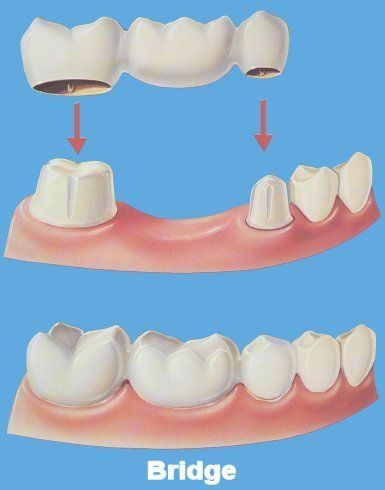Is A Ceramic Bridge Right For You?

Ceramic bridges are a popular option for replacing one or more missing teeth, and unlike implants, they don’t require surgery. In the past bridges needed to be made partly from metal in order to be strong enough to bridge the gap between the missing teeth, but thanks to advancements in dental technology it is possible to craft very strong bridges from ceramic.
Why replace missing teeth?
The obvious reason for replacing a missing tooth or teeth is to improve a patient’s appearance. Another is that teeth on either side of the gap can be put under strain. A gap can also affect a patient’s bite because those teeth either side try to lean into the gap and alter the way that your lower and upper jaw fit together. This then leads to food particles getting trapped in the gap which in turn can lead to tooth decay and further tooth loss.
Who can benefit from a fixed bridge?
A fixed bridge is usually a recommended option if there are just a few teeth to replace or when the teeth are all missing from just one side of the jaw. In order to be a suitable candidate for a fixed brace you’ll need to have the following:
- Sufficient space for the dentist to work in and for the bridge to fit in
- Good oral health, since if you can’t look after your mouth prior to having a bridge, chances are you’ll struggle afterwards
- Good solid teeth – Great bone support and strong teeth are required to support a bridge and false teeth. If bone support is poor, then a bridge could make matters worse. If more bone is lost from the pressure of supporting replacement teeth, then those teeth will eventually weaken, fall out, and leave you with an even bigger gap.
Advantages of a fixed ceramic bridge
- Bridges close the gap without the need for a removable denture or the use of dental implants.
- Our ceramic bridges are colour matched to your other teeth and blend in for a seamless appearance.
- They can last between 10-15 years if they’re properly maintained and correctly designed.
Disadvantages of a fixed bridge
- Bridges require careful cleaning since plaque can accumulate on the underside. Since the false tooth is tightly attached on either side to real teeth, it can be difficult to floss in the normal fashion.
- A fixed bridge can be considered destructive since the teeth on either side of the gap will have to be modified in order for the bridgework to be attached.
- When a tooth is prepared for a full crown or as part of a bridge, there is a risk that the nerve will die and this may mean that a root canal is needed in future.
- Crowns on their own can be quite expensive, so add in the cost of the bridge work and the price can quickly escalate.
If you think you may need a bridge or are interested to learn more, then please get in touch.
